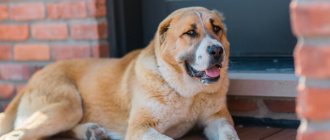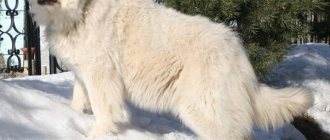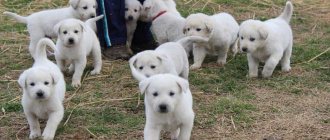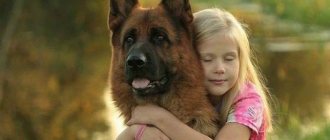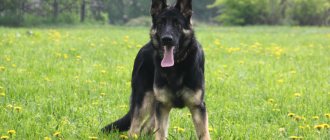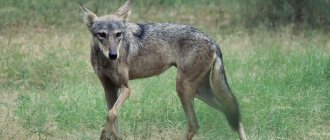The differences between the shepherd dogs bred in Belgium are in the length of the coat, color characteristics and texture. The Malinois is a Belgian Shepherd with short hair and well-developed muscles. She is characterized by a special gracefulness, multiplied by the natural flexibility of the body. Representatives of this breed become good friends and hardy work assistants. They are responsible, hardworking and loyal. The owners note such interesting aspects as curiosity, determination, and quick reactions.
History of the breed
Belgian Shepherds have a proportional build, an unpretentious character, and a fair disposition. They can stay outdoors for a long time without any problems and adapt to different weather conditions. It was these qualities that served as the reason for them to be chosen for selection. Veterinary professor Adolf Rühl once attended an exhibition of farm animals. The audience was presented with a breed of dog that helped shepherds in their difficult task. Dr. Rühl had the idea, based on these wonderful animals, to breed a breed that combines the right amount of aggression, tolerance towards the owner’s family, and the ability to get along with other animals.
Work was in full swing. For six years, the genetic apparatus of animals was influenced by selection methods. At the same time, the dogs felt great and reproduced well. Thus, in the city of Mechelen, located in Belgium, the Malinois shepherd dog breed saw the world. The owners of a new breed of herding dog organized a Malinois club.
The audio similarity of the name to a word of French origin indicates the popularity of the speech of Napoleon's homeland in Belgium at that time. Mechelen in French sounds like “maline”, which is why the idea arises about the French nature of this dog.
The 90s of the 19th century are considered the period when the Belgian Shepherd breed was officially recognized. The standard established in those days is still in effect in cynological circles today. But after some time in the history of the breed, a division into varieties appeared:
- The Malinois was a short-haired dog, yellow or fawn in color with a black muzzle;
- Laekenois - a red or gray-ash individual with the same, but coarser hair;
- Groenendael - a coal-black variety with long hair;
- Tervuren is a bright red long-haired variant.
Description of the Malinois breed
The Malinois dog cannot be called the largest representative of the Belgian Shepherds. Their natural advantage is flexibility and leanness. The short coat highlights every muscle well. In active movements they are not only fast, but also graceful.
Size and weight
Standards dictate that the height of a male should be 0.6 m, a female – 0.56 m. Moreover, the weight almost never exceeds 30 kg for a male and 25 kg for a female.
The dog's body is characterized by visual lightness and clear angles. A retracted belly gives leanness and agility, and a straight shoulder makes the body strict.
The slightly elongated head has a rounded nape and a square forehead. The muzzle has no noticeable transitions. The teeth stand out on it, and the area of the nose and lips is always painted in a dark color. The bite is straight and correct. It is formed by white, strong teeth.
Above the mouth there is a wide, even nose and medium-sized round eyes. The color of the iris is brown or black. A striking feature of the Malinois breed is its ears located next to each other. Their position on the same axis gives the dog originality. The ears are triangular in shape and stand straight up on the head due to the rigidity of the cartilage.
The strong tail hangs straight down. It cannot be seen twisted upward or shifted to the side.
The tail looks perfect against the background of massive, strong paws with a dark base. Wide hips are located at an even angle.
The animal's posture is straight and proud. Raised on a slightly widened neck, the head is directed forward and upward. It seems that mindfulness and concentration itself moves this body.
Color and coat type
The breed standard (Malinois) dictates the structure and color of its coat. It can be dense and short, but have a thick undercoat. Thanks to this, the dog is resistant to cold and winds. There is a certain amount of fur in the tail and on the tops of the hind legs. The color of the Malinois is red-brown or yellowish-gray. The skin is elastic and smoothly stretched over the body.
The lips and ears are always dark in color, which creates a reason to compare the color of the muzzle with a black “mask”. The chest and fingers have light tan marks.
Distinctive features
It differs from its fellow Malinois in its medium size and short hair. She is also not superior to others in speed and endurance, but is considered the most efficient. The standard height for a male at the withers is 60-66 cm , for a female - 56-64 cm . Dogs weigh no more than 30 kg due to their leanness.
Thanks to its good muscular physical shape, the Malinois appears proud and graceful. There are certain breed standards that must be checked before allowing an individual to reproduce:
- The head is proportional to the body, due to the muzzle it seems slightly elongated. The forehead is pronounced, smoothly turning into the bridge of the nose, the brow ridges do not protrude; rounded occipital bone.
- The muzzle is elongated, slightly narrowed towards the nose, giving the head a rectangular shape. Scissor bite (the upper jaw covers the lower jaw), the jaws are strong. The lips are thin, not saggy, and pigmented black. The nose is round and large. The cheeks are flat.
- eyes are not deep set. The color of the iris varies from dark brown to golden. The look is intelligent and wary.
- The ears are wide at the base and pointed at the ends. Directed upwards, docking is not accepted.
- The body is rectangular (more elongated in females), deep, narrow chest, elongated ribs. The loin is short and wide. The belly is lean. The tail is sickle-shaped, wide at the base, and not set high; The coat is short, without a tassel, but with elongation.
- The neck is muscular, wide, elongated and widens towards the shoulders. There is no suspension.
- The limbs are strong, well developed, muscular. The shoulder blades are long and slanting. The hind ones are more massive with wide hips. They move in the same plane as the front ones. The feet tend to be round in shape, with dense pads and hard nails.
- The coat is straight, hard, flat, short with a silky undercoat that helps the dog survive any weather conditions.
- Color red, fawn. There are charcoal markings on the sides and back, and a black mask on the face from lips to eyes.
The standard is considered generally accepted. Any deviations are defined as defective (both in appearance and behavior). Aggressive, lazy, stubborn dogs are excluded from further reproduction.
Breed diseases
Malinois dogs have strong natural immunity and can cope with common diseases on their own. The breed adapts well to changes in the external environment and does not react to them by developing characteristic pathologies. However, some individuals may have genetic problems. As examples, dog experts cite retinal cataracts with subsequent complete atrophy, underdevelopment of the hip joints, diabetes mellitus, epilepsy and others.
Belgians are predisposed to diseases of an allergic nature and various types of dermatitis. To avoid these problems, serious control over their nutrition is necessary.
Lifespan
The good health of Belgian women allows them to increase their average life expectancy to 12-15 years. With good care they live 18 years.
Belgian Shepherd Health
Belgian Shepherds are generally healthy dogs. Their lifespan ranges from 10 to 14 years. Laekenois are most prone to genetic diseases, as they were previously subjected to constant inbreeding.
Epilepsy
It can be primary (inherited) and secondary (acquired). In the first case, epilepsy is incurable, but in the second it is a symptom and can be eliminated with proper measures.
Causes of secondary epilepsy:
- diseases associated with the accumulation of harmful substances in the body;
- developmental problems (hydrocephalus);
- toxic (poisoning with lead, arsenic, organophosphates, strychnine);
- infections (plague, encephalitis, toxoplasmosis, etc.);
- metabolic (low blood sugar, enzyme deficiency, liver and kidney failure);
- food (lack of vitamins, parasites);
- traumatic (severe bruises and injuries).
The most important sign of the disease is the presence of epileptic seizures. They can occur with a frequency ranging from once every few months to once every few days. The duration of the seizure can be from a minute to half an hour, with or without brief periods of consciousness. The dog's eyes roll back, his body spasms, and he may foam at the mouth.
BO are susceptible to epilepsy
Medicines and therapy can alleviate the animal's condition, but do not completely cure hereditary epilepsy.
Cataract
Otherwise, clouding of the lens can lead to blindness. Most often, cataracts occur for hereditary reasons; in older dogs, the risk of occurrence is associated with diabetes or weakened immunity.
What symptoms should you contact a veterinarian for:
- changes in iris color;
- cloudiness or growths in the eye;
- the eye may take on a bluish tint.
Cataracts are difficult to treat. In the later stages it is incurable.
To keep your dog's eyes healthy, they need daily care.
Pannus (chronic keratitis)
Pannus is an inflamed condition of the cornea. With this disease, granulation tissue begins to form in the cornea. The cornea becomes cloudy, blood vessels and pigment spots appear on it.
Typically affects both eyes. Cloudiness begins from the inner corner. Fortunately, it is treatable. But in its absence it leads to blindness.
Characteristics of the Malinois Shepherd Dog
The Belgian Malinois cannot boast of a calm and balanced character. The features that are their absolute advantage include:
- expressed mind;
- devotion to the owner;
- the desire to accurately carry out the assigned task.
However, it should be added to the description that such a friend always remains independent and free-thinking. Depending on the circumstances, the Malinois may completely ignore the owner's instructions and act in his own way. If proper training is not applied in time, the puppy will grow into an aggressive (or cowardly) individual. She will run and bark at all passing cars and any sharp sound. But this outcome can be avoided if you instill in your dog the appropriate skills.
Important: no matter how well a Belgian woman treats the members of the family supporting her, only the owner will be an indisputable authority for her. She is ready to fulfill his words and thoughts at any time.
It is believed that it costs her nothing to guess the owner’s mood. And at such moments she behaves accordingly.
Flaws
- The breed has few disadvantages . They absolutely cannot stand loneliness and need constant attention and care. In such conditions, the dog withers, loses activity and adequacy.
- Likewise, Malinois do not like enclosed spaces and require constant active walking . They need strict upbringing and daily training to properly develop their skeleton and character. Hyperactive, mischievous, love to dig and chew. They are unkind to other pets, especially relatives.
- They shed actively in autumn and spring . When kept in apartments, they shed all year round and must be brushed daily.
- Without proper upbringing, they become aggressive and disobedient. Absolutely not suitable for beginners.
Attitude towards children and others
Speaking about the Malinois breed, experts pay attention to their clear distinction between those around them as “friends” and strangers. For the Belgian, the owner’s family is an object of protection. He will express his devotion and care to them in every possible way, and protect them from any danger. If a stranger appears in the immediate environment, the Malinois will have enough endurance to observe him from afar. However, at the slightest sign of aggression from an outsider, the shepherd will immediately rush into battle.
The same can be said about the dog’s desire to carry out the owner’s instructions. She especially loves the role of watchman. When guarding a plot or house, the Malinois will be a model of responsibility and conscientiousness.
Today, Belgian women are increasingly being bought into families for teenagers. And not in vain. They are wonderful friends, sociable and active partners. They will take part in games, show their sympathies, but will not forget about their main function: to protect the children of their owners from the slightest danger.
This breed of dog does not have much friendship with younger children. But they are indispensable assistants in supervision and protection from strangers. The dog will not harm the baby, but allowing itself to be pulled by the tail is beyond its strength.
Temperament and character traits of the Malinois
Dogs of this breed are very smart, they have a stable psyche and some independence. Therefore, such a pet needs careful training and early education.
Only a kind and skillful owner can make a Malinois an ideal protector and obedient pet. If the owner does not engage with his four-legged friend, the dog becomes uncontrollable and completely independent. Therefore, professionals have a well-established opinion that beginners and people who do not have the desire and ability to regularly train a dog should not own a Belgian Shepherd of any type.
A shepherd dog, in the absence of attention from the owner, can behave somewhat intrusively. Malinois puppies are very playful and capable of mischief. But most often the pet behaves quite seriously. Such a dog will not show aggression towards the owner, members of his family and acquaintances. However, if a stranger invades its territory, the dog becomes a dangerous adversary, incorruptible and stern. If the owner gives a certain command, then the pet will “accompany the target,” that is, carefully observe strangers, without anger or other negative manifestations.
Perhaps, if we compare all the “Belgians”, it is the Malinois that has the best developed watchdog qualities. Because of this, they need early socialization more than others. Without it, the dog can grow up to be overly suspicious and angry.
Belgian Shepherds get along well with children, but this is only possible if the child does not bother the dog too much and does not treat it as his own toy. It is not recommended to leave children alone with such a serious dog.
Most Belgians find a common language with other pets, but some individuals of this breed have too pronounced a hunting instinct. Such a dog will not be able to deny himself the pleasure of chasing smaller animals. Some Malinois, especially males, are quite dominant, so they can conflict with brothers of the same sex, proving their superiority over and over again.
Training
As soon as the puppy appears in the house, the owner must establish proper contact with him. A positive outcome of training is ensured precisely from this period, since respect for the owner is the main thing that will guide his behavior in the future.
The correct response to basic commands will be the result of regular physical exercise and training only if the dog respects the owner. To do this, true friendship and respect must begin between them from the first contacts. Playing together, a moderately strict attitude, fair distribution of responsibilities, well-deserved praise are the principles of education that result in an obedient and competent animal.
Character
The Malinois can be described as friendly and playful, but these personality traits are only shown towards family members. The shepherd is devoted to its owner, but contact must be established with it from the very beginning, there must be a trusting relationship. This is a dog that is capable of making its own decisions when it comes to protection. Noticing the threat, the dog fearlessly rushes to eliminate it.
The energy of the Malinois seems to be inexhaustible. Until the age of five, such a pet behaves in the house like a puppy. His activity without proper education becomes destructive. The dog will definitely try to use pillows, shoes, furniture, curtains as toys... Physical punishment will not help in this case, you just need to distract the pet with real toys. Over time, he will understand how he can play with impunity.
The Shepherd is tolerant of children, but you should not leave the Belgian alone with the kids. Shows distrust of strangers and tries not to take his eyes off the stranger. The Malinois gets along with pets, but will never allow itself to be controlled or infringe on its interests. Dominance is not in her nature, so you can keep two males together without any particular conflicts arising between them.
Pros and cons of the breed
The breed is smart and quickly grasps the lessons presented to it. However, she gets tired of following the same commands for a long time. When this happens, the dog stops obeying and begins to play around. Therefore, the trainer is advised to alternate training with active games for dogs of the appropriate age. This will allow you to maintain interest in classes and quickly master the necessary skills.
In general, the Malinois is so energetic and active that it enjoys learning new commands and performing assigned tasks. She has an excellent memory and does not need long-term training in new training positions. What she remembers, the dog is ready to proudly demonstrate to the owner upon request.
But for the Belgian woman, the owner’s dissatisfaction with her work will be a real grief. You cannot scold her or make complaints in a rude manner. Touchiness is one of the characteristics of the breed.
Peculiarities of the breed: ear placement
Some features inherent to the Belgians are the positioning of the ears, which should stand up by 4-5 months. For a better and faster process, the puppy can be a shepherd, you can help yourself. The difficulty is that the puppy does not want to walk around with these horns on his head, but there is no escape from this.
Ears can be placed using ordinary, improvised means. It is important to make sure that there are no wounds on them before the manipulation itself.
You will need:
- Medical plaster in a roll on a fabric base, it sticks better.
- Cotton buds;
- A twisted paper stick the size of the ear itself, it can be foam rubber, a wooden ice cream spoon.
- Scissors.
Wrap the stick with a plaster, choosing the right size, place it at the base of the ear, without covering the external auditory canal, wrap the plaster together with the ear, in a circular motion, between the two ears - place a bridge in the form of a cotton swab, attaching it with the same plaster, having previously wrapped it. Everything, the “crown” or “horns” as they are also called, is ready.
Maintenance, care and nutrition
Malinois are easy to keep even in a high-rise apartment. The dog is small, so it can easily live in the available space. At the same time, daily walks in free space are mandatory for her. Muscles develop through active physical movements, and supplying organs and tissues with oxygen is essential for their health.
From the moment a shepherd puppy appears in your home, organize regular and competent care for it. Monitor his weight gain month by month. Correction of disorders is carried out by proper nutrition. Special dry shampoos are used to clean the coat; a full bath is recommended once every six months. The thick undercoat makes regular brushing necessary. Massage brushes are used for this, and after the procedure they are thoroughly cleaned. During molting, such scratching is carried out every day, and between them - once a week.
Pay attention to the puppy’s eyes and ears. For cleaning, cotton pads and, if necessary, special solutions are used. It is important for pets to trim their nails regularly, unlike those who live in the yard and do it themselves.
Proper preparation of a dog’s diet is one of the important components of Malinois care. Its features are:
- balance;
- calorie content;
- presence of vitamins and microelements.
Until the age of three months, puppies are breastfed and receive the necessary set of nutrients from their mother's milk. After this period, they are transferred to natural feeding. First they feed them with vegetable soups and porridges, and later add pieces of boiled meat to them. When it is not possible to breastfeed a baby for up to three months, he is fed liquid cereals or special formulas for puppies.
Both dry industrial food and products of natural origin are suitable for the breed. Dry food should be of high quality and healthy; it is better to buy it from reputable sellers. Composing a diet from natural products is more difficult, but more economical. Do not forget that the basis should be meat and offal. Boiled veal, lean pieces of pork, heart, kidneys and liver of beef are useful. The diet is supplemented with cereals, vegetables, dairy products, and low-fat fish. Enrich your puppy's diet with special vitamins for up to one year.
You need to cook food without salt, sugar, you cannot add spices and preservatives.
Oil is useful 2-3 times a week, and fish oil - monthly. We must not forget about the necessary microelements. They are selected according to age and the presence of health problems.
How to choose a puppy
You can buy a purebred Malinois puppy and be sure of its pedigree in a special nursery. When choosing, pay attention to the compliance of its characteristics with established standards. Temperament and acumen are important. The characteristics of his parents serve as a guide. There are clubs that offer to choose an unborn puppy. Then, to fully comply with the customer’s requests, pre-selected parents are crossed.
A puppy comes from a kennel to its new owners at the age of one and a half to two months. Its price ranges from 30,000 to 40,000 rubles. If the chosen baby is a mixed breed, for example, with a brindle color, then the price will drop to 10,000-15,000 rubles.
Breeders' advice on choosing a puppy
The baby Malinois puppy will be a wonderful friend for adults and children. A lot depends on the right choice of animal. Before making a decision, you need to find out detailed information about the parents, clarify the presence of a pedigree, and ask about health and temperament.
When choosing a puppy, rely on external data, healthy babies look nice, may have puppy plumpness, have a pleasant smell, healthy mucous membranes, are active and inquisitive.
- Be sure to find out if all vaccinations are available and when deworming was carried out.
An important indicator is activity, disposition towards a person, mood and behavior. The more active the puppy is and behaves openly, the more cheerful his temperament is.
